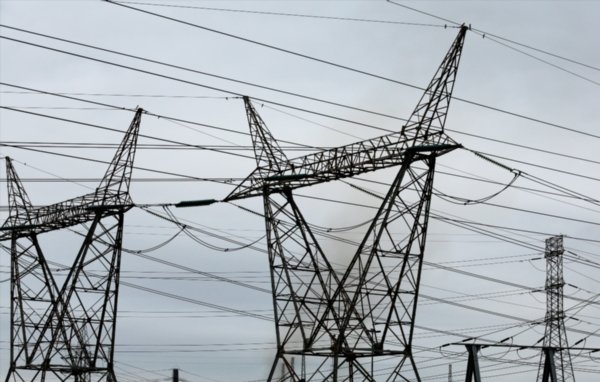Eskom: Grid remains constrained
Updated | By Olivia Phalaetsile

On Wednesday any extra load or faults in the system may push Eskom to implement load shedding.
Here is Eskom's status bulletin....
We see some relief from Thursday into the weekend with a decent gap between demand and supply.
However, the need to use electricity sparingly must become a lifestyle for South Africans as we are running a system with a low reserve margin.
Eskom continues to make progress with its programme of planned maintenance.
The capacity available to meet demand depends on the number of generating units that are unavailable for planned and unplanned maintenance.
We therefore urge all customers to partner with us to save at least 10% of their electricity usage throughout the day.
This will help us manage the power system during this challenging time, while also enabling us to do adequate maintenance to ensure the reliability of our plants.
Eskom calls on all South Africans to pull together over the next few months and use electricity sparingly
Homeowners and businesses can save electricity by following just four steps: first, switching off geysers and pool pumps; second, switching off non-essential lights; third, efficient use of air-conditioners by keeping the room temperature at 23⁰C; and finally, responding to the alerts on TV each evening.
Trends in the supply and demand of power in South Africa are as follows:
Today (Monday 30 March): The capacity available to meet this evening’s peak demand is 32 693 MW (including open cycle gas turbines) while demand is forecast at 31 483 MW. Current planned maintenance stands at 4 393 MW. Unplanned outages are 6 459 MW.
Peak demand and available capacity for the rest of this week is forecast at (please note that these are estimates and will likely differ from the actual figures):
Tuesday (31 March): The capacity available to meet tomorrow’s evening peak demand is 32 783 MW (including open cycle gas turbines) while demand is forecast at 31 329 MW.
Wednesday (01 April): The capacity available to meet that evening’s peak demand is 33 235 MW (including open cycle gas turbines) while demand is forecast at 31 461 MW.
Thursday (02 April): The capacity available to meet that evening’s peak demand is 34 943 MW (including open cycle gas turbines) while demand is forecast at 29 775 MW.
Friday (03 April): The capacity available to meet that evening’s peak demand is 34 884 MW (including open cycle gas turbines) while demand is forecast at 27 177 MW.
Saturday (04 April): The capacity available to meet that evening’s peak demand is 34 427 MW (including open cycle gas turbines) while demand is forecast at 27 634 MW.
Sunday (05 April): The capacity available to meet that evening’s peak demand is 34 071 MW (including open cycle gas turbines) while demand is forecast at 27 278 MW.
Yesterday (Sunday 29 March): Peak demand of 28 585 MW met by available capacity of 31 952 MW (including open cycle gas turbines).
Saturday (28 March): Peak demand of 28 120 MW met by available capacity of 31 924 MW (including open cycle gas turbines).
Friday (27 March): Peak demand of 29 431 MW met by available capacity of 31 982 MW (including open cycle gas turbines).
Thursday (26 March): Peak demand was reduced down to 29 067 MW with available capacity 29 227 MW (considering primary energy constraints).
Top saving tips at home:
There is a golden rule that applies to saving electricity in the home: If you’re not using it, switch it off.
By partnering with Eskom and changing the way we use energy everyday, you can make a difference to the electricity supply shortage in our country
Geyser – it guzzles 39% of your monthly energy usage. Switch it off to reduce your energy demand. Don’t forget to insulate the geyser and water pipes.
Shower – it uses less water than bathing and using less hot water means less work for the geyser. Use an energy efficient shower head since it uses less water.
Lighting – replace all your incandescent bulbs with energy saving Compact Fluorescent Lamps (CFL) and switch off the lights in unoccupied rooms.
Standby electricity – don’t leave your TV, DVD player, etc. on stand-by mode, they still use up to 50% off their operating power. Rather switch them off at the power switch and don’t forget to unplug your cell phone charger after your phone has been charged or it will continue to draw power.
Refrigeration – close your fridge door quickly so it doesn’t use extra power to get back to its optimal cooling level.
Temperature control – keep the room temperature between 18°C - 23°C, this is known as the “golden zone”.
For more news updates follow @JacaNews on Twitter
File photo Gallo images
Show's Stories
-
"Is that my ear?" Barber pranks kid during haircut
Could you ever get tired of a good prank?
The Workzone with Alex Jay 1 day, 9 hours ago -
Toddler says he's allowed to bite people
A little boy answers "yes" when asked: "Are you allowed to bite people?"
The Workzone with Elana Afrika-Bredenkamp 1 day, 9 hours ago